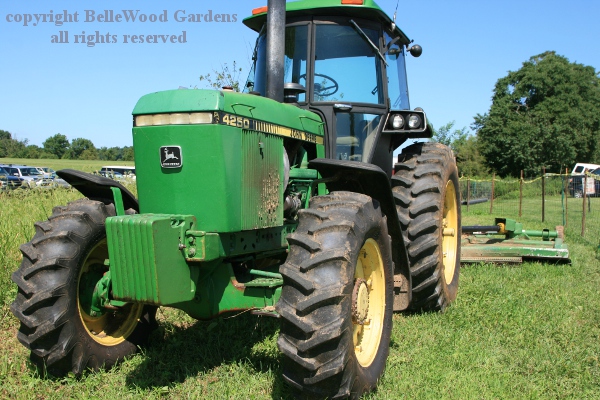
.
If you have any comments, observations, or questions about what you read here, remember you can always Contact Me
All content included on this site such as text, graphics and images is protected by U.S and international copyright law.
The compilation of all content on this site is the exclusive property of the site copyright holder.
A Day at the Fair - Antique Tractors
Thursday, 23 August 2018
I've wandered through the barns looking at livestock, poultry and produce. And found myself thinking, they don't exist in a vacuum. I mean, O.K.

the fair grounds have equipment like this John Deere 4250 with a mower deck
that keeps the fields cut. Probably has other attachments too. It's more than that. Those hay bales on show in the horticulture show barn. The hay in manger bags in the animal pens, the straw the animals are lounging on - it had to be seeded into tilled ground, cut, baled, moved to the hay barn for storage. If you have a few tomato plants the ground can be spaded with the eponymous tool. But a big corn field? Think about it. How does the work get done?
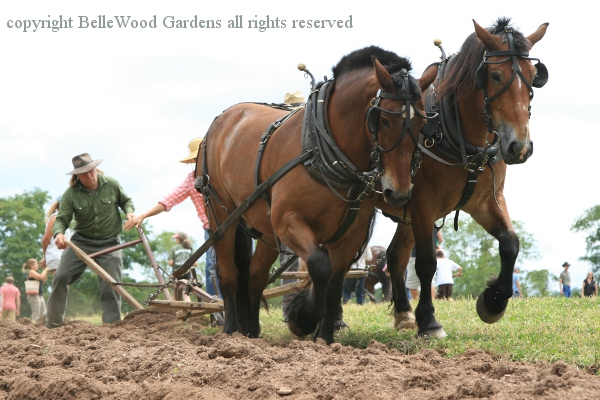
Once upon a time it was done with livestock - draft horses, mules, or oxen. A good team of horses can plow two acres in a day, or cultivate perhaps seven acres of row crops. They can haul wagons. Horses can (sometimes) make more horses (which mules and oxen cannot.) All three types of draft animals make manure, that can be composted or spread over the fields, adding organic matter to the soil. Draft animals are useful on relatively small farms, from 10 to a few hundred acres.
Tractors come in different sizes and, depending on size, can do more than a team. They need fuel and oil, not grain, hay and straw. Just as a draft team can do several types of work
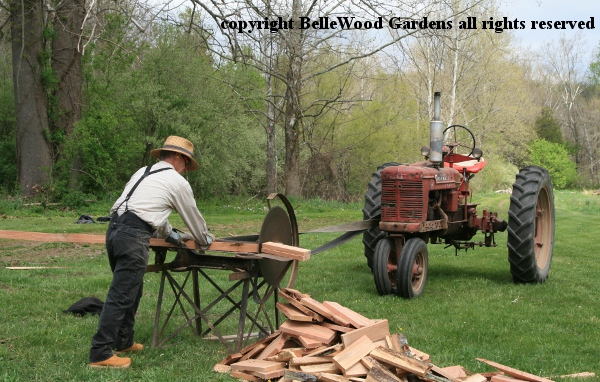
a tractor with a PTO (power take off) can do more than plow and cultivate,
such as provide power to a circular saw to cut boards to length, for example.

Here, a tractor pulls an attachment that allows two people to sit,
left and right, with a tray of chitted potatoes in front of them.

As each piece is dropped in the furrow, a small pair of wheels
neatly ridges the dirt back over the pieces of potato.
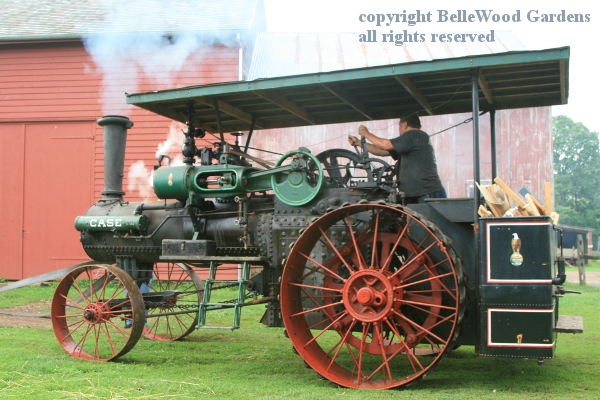
Late 19th century saw the introduction of steam powered traction engines, like this 150 hp, 1907 J.I. Case steam engine at Howell Living History Farm. It's used for threshing wheat (and in December it also carries Santa and Mrs. Claus to the farm.) The road engines gradually faded out of use, replaced by the gasoline powered tractors we are familiar with today.

So when I pass this Morton building with its Antique Tractors sign of course I went in.

This steel wheel 1931 John Deere is still looking a little rough around the edges. Some are acquired in as even more dilapidated, fresh from the field junkers, pulled out of a hedgerow in desperate need of TLC and restoration that may go as far as manufacturing broken / missing parts that are no longer available.
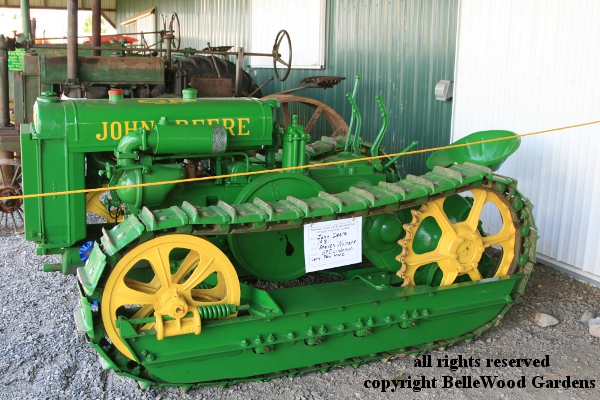
Looks rather different. Oh, not because of the treads instead of wheels.
No rust, fresh paint. After all, this 1931 John Deere has the same engine.

Now into the barn. Tractors side by side by side. Need a cherry picker.
Or a drone. This handsome blue ribbon winner is a 1936 John Deere.

Strangely enough, there are a few not-green John Deere, like this 1952 MI.

On to other manufacturers. Here is an Allis-Chalmers Model G
with perhaps not yet restored harrow blades mounted below.
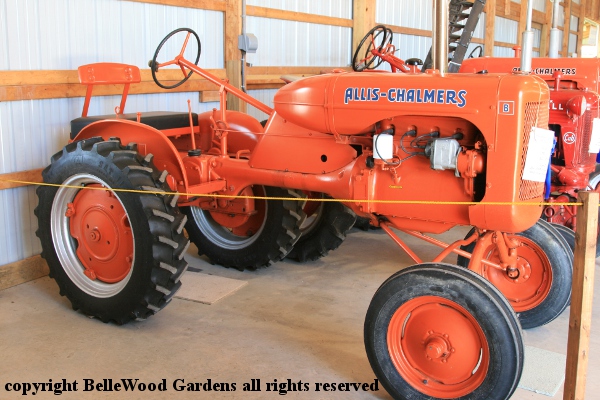
A 1937 Allis-Chalmers, that looks like some over-size wind-up toy.

Almost modern. A 1961 Farmall 560. White, however, does not
seem a good color for a tractor. Dirt, a little oil, engine heat . . .
no idea if these tractors have chance to get down and dirty now.
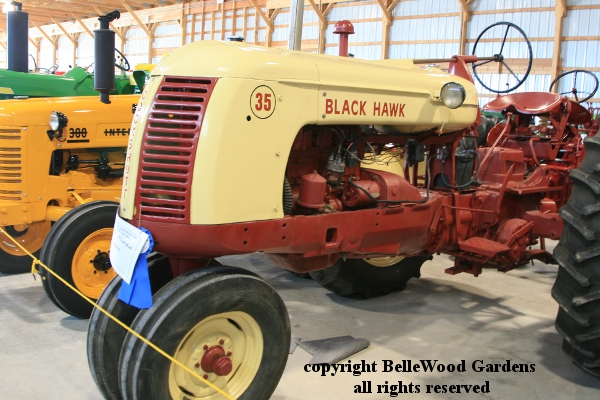
In Canada, north of the border, the Cockshutt Plow Company, began manufacturing farm equipment in the late 1800s. A family business, the brothers continued well into the 20th century. In 1956 they used the name Black Hawk to celebrate the acquisition of the Ohio Cultivator Company. A total of1,850 Cockshutt 35 tractors were built from 1956-1958.

And here we have a 1945 Oliver Row Crop 60. The row-crop version, like this tractor, was the most prolifically manufactured Oliver 60, with approximately 25,131 built from 1940 to 1948. The modern streamlined look, closed panels ventilated by 12 louvers of varying lengths for an Art Deco flair, the tractor's slim, sloping hood to give the farmer a better view of the field. Oliver termed this design "Row-Vue." Marketing, you know.
The next time I pull up to an end of driveway in farm field of corn to buy a dozen ears, I'll think of the farmer on his tractor, doing all that plowing, seeding, cultivating so we have fresh corn for our dinner. And say, "thank you."
Back to Top
Back to August 2018
Back to the main Diary Page